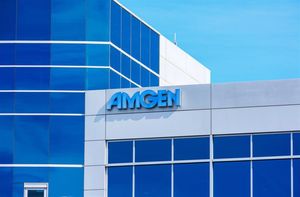
Senior living provider The Pennant Group (NASDAQ: PNTG) announced better-than-expected revenue in Q3 CY2025, with sales up 26.8% year on year to $229 million. The company’s full-year revenue guidance of $930 million at the midpoint came in 3.5% above analysts’ estimates. Its non-GAAP profit of $0.30 per share was 4.6% above analysts’ consensus estimates.
Is now the time to buy PNTG? Find out in our full research report (it’s free for active Edge members).
The Pennant Group (PNTG) Q3 CY2025 Highlights:
- Revenue: $229 million vs analyst estimates of $222.3 million (26.8% year-on-year growth, 3% beat)
- Adjusted EPS: $0.30 vs analyst estimates of $0.29 (4.6% beat)
- Adjusted EBITDA: $17.35 million vs analyst estimates of $18.17 million (7.6% margin, 4.5% miss)
- The company lifted its revenue guidance for the full year to $930 million at the midpoint from $870.2 million, a 6.9% increase
- EBITDA guidance for the full year is $72.35 million at the midpoint, above analyst estimates of $71.74 million
- Operating Margin: 4.5%, down from 6% in the same quarter last year
- Sales Volumes rose 36.2% year on year (38.5% in the same quarter last year)
- Market Capitalization: $821.6 million
StockStory’s Take
The Pennant Group’s third quarter results were met with a negative market reaction despite revenue and adjusted EPS both surpassing Wall Street expectations. Management pointed to strong operational execution in home health, hospice, and senior living as key drivers, with CEO Brent Guerisoli highlighting that “new highs in revenue, census, occupancy and earnings” were achieved. However, investors weighed concerns about operating margin compression and the complexity of integrating a large acquisition, as the company prepares for further growth amid evolving industry dynamics.
Looking ahead, The Pennant Group’s raised full-year outlook is anchored by sustained momentum in its core businesses and anticipated contributions from recent acquisitions. Management emphasized plans to scale its Southeast operations and drive incremental margin improvement in senior living through occupancy gains. COO John Gochnour noted that “the latent upside in this segment remains significant,” while management remains mindful of regulatory headwinds, particularly in home health. The company is prioritizing careful integration and operational alignment to deliver on its expanded guidance.
Key Insights from Management’s Remarks
Management attributed the quarter’s performance to robust organic growth, seamless acquisition integration, and ongoing investment in local leadership development, while noting margin pressures from higher costs and transition-related expenses.
-
Acquisition integration underway: The closing of the UnitedHealth Amedisys transaction brought 54 new locations in the Southeast, with management focusing on leadership alignment, shared service support, and gradual system transitions. Early contributions are expected to be modest due to elevated transition costs and operational adjustments in the near term.
-
Organic growth in core segments: Home health and hospice segments delivered strong performance, driven by admissions growth, improved clinical quality scores, and lower potentially preventable hospitalizations. The hospice business saw higher average daily census and earlier identification of eligible patients, supporting longer lengths of stay and financial momentum.
-
Senior living occupancy gains: The senior living segment recorded record occupancy rates, following years of investment in local leadership, digital marketing, and facility upgrades. Management highlighted that improved revenue quality now allows for a greater focus on occupancy-driven operating leverage.
-
Margin pressure from cost structure: Operating margin declined year on year, reflecting increased general and administrative expenses linked to acquisitions and investments in service center infrastructure. CFO Lynette Walbom explained that noncontrolling interest from joint ventures also impacted reported EBITDA margins.
-
Regulatory and reimbursement environment: Management highlighted uncertainty related to the pending 2026 home health rule but emphasized Pennant’s diversified revenue mix and proactive contingency planning. The company expects to adapt locally to reimbursement changes and continues to advocate for favorable policy outcomes.
Drivers of Future Performance
Pennant’s forward outlook is driven by acquisition integration, occupancy growth in senior living, and navigating regulatory changes impacting home health margins.
-
Southeast expansion integration: Management expects the UnitedHealth Amedisys acquisition to serve as a platform for growth in the Southeastern United States, but anticipates near-term variability in results as the acquired operations are integrated and rebranded, with full contributions expected once systems and leadership are aligned.
-
Senior living margin expansion: Incremental occupancy gains are projected to drive disproportionate margin improvement in senior living, as fixed costs are already covered. Management is emphasizing leadership development and facility upgrades to sustain growth and capture latent upside in this segment.
-
Home health regulatory headwinds: The company is preparing for potential reimbursement cuts under the pending 2026 home health rule. While less than 20% of Pennant’s revenue is tied to Medicare home health fee-for-service, management remains cautious and has developed contingency plans to mitigate negative impacts and adapt operations at the local level.
Catalysts in Upcoming Quarters
In the coming quarters, our team will monitor (1) the pace and success of integrating the Amedisys operations in the Southeast, (2) incremental occupancy improvements and margin expansion in senior living, and (3) the company’s ability to offset regulatory headwinds in home health. Continued M&A activity and leadership development initiatives will also be important signposts for Pennant’s ability to sustain growth and profitability.
The Pennant Group currently trades at $23.75, down from $25.21 just before the earnings. Is the company at an inflection point that warrants a buy or sell? Find out in our full research report (it’s free for active Edge members).
Our Favorite Stocks Right Now
Donald Trump’s April 2025 "Liberation Day" tariffs sent markets into a tailspin, but stocks have since rebounded strongly, proving that knee-jerk reactions often create the best buying opportunities.
The smart money is already positioning for the next leg up. Don’t miss out on the recovery - check out our Top 5 Strong Momentum Stocks for this week. This is a curated list of our High Quality stocks that have generated a market-beating return of 183% over the last five years (as of March 31st 2025).
Stocks that made our list in 2020 include now familiar names such as Nvidia (+1,545% between March 2020 and March 2025) as well as under-the-radar businesses like the once-small-cap company Exlservice (+354% five-year return). Find your next big winner with StockStory today.
StockStory is growing and hiring equity analyst and marketing roles. Are you a 0 to 1 builder passionate about the markets and AI? See the open roles here.





